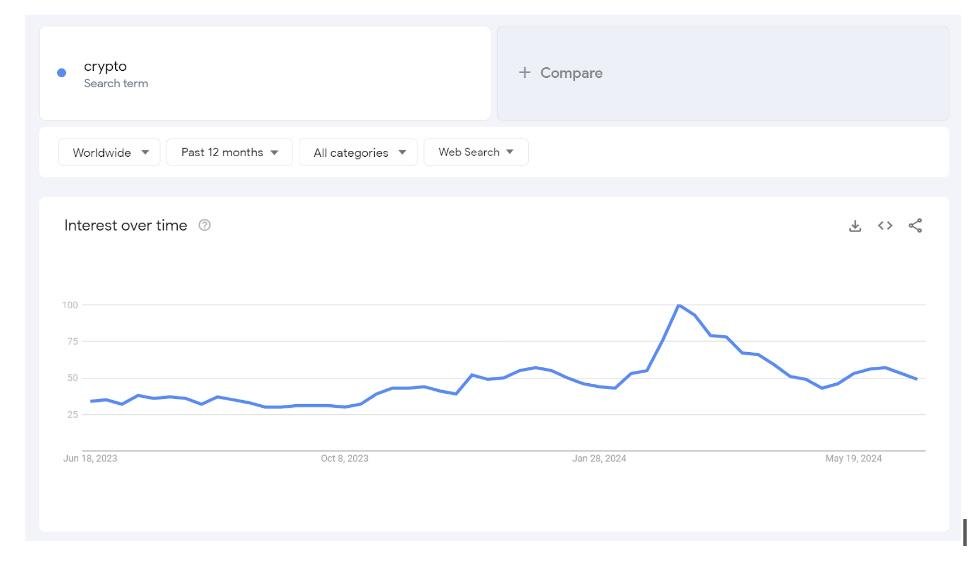Consumers can use their debit cards at almost any retail outlet or brick-and-mortar stores these days. It has made day-to-day payments very easy and hassle-free.
But it wasn’t always like this. When early iterations of debit cards arrived in the 1970s, they were usable only at Automated Teller Machines (ATMs). Most retail outlets couldn’t accept them because point-of-sale (POS) terminals were expensive and not as widely available as they are now.
Web3 payment rails are in a similar spot currently. While certain online stores like Overstock, Microsoft, Shopify and more, accept Bitcoin BTCUSD payments, consumers mostly can’t pay their local grocery or cleaning service provider in crypto.
Related: The Asia-Pacific market is heating up for Bitcoin and Ethereum ETFs
That’s partly due to lack of awareness and negative sentiments around hacks and scams involving crypto. The bigger factor, however, is the low availability (and adoption) of robust last-mile infra such as POS terminals designed for crypto payments.
Influencers and opinion leaders who worry about “retail” sleeping on the ongoing market cycle tend to miss a key point. There are no magic potions to onboarding mainstream users at scale.

Web3 builders must move beyond digital-only products and focus on improving consumer experiences at a day-to-day level. Mass adoption won’t come unless industry stakeholders — project owners, devs, and investors — collectively optimize for practical utility.
Like debit cards with POS machines, the Nth cryptocurrency is futile (except for pure speculation) without corresponding and accessible infrastructure.
Meeting users where they are
Web3 has powerful adversaries, both financially and politically. So the almost missionary zeal to convert as many people as fast as possible is understandable.
But spawning one “hot narrative” after another won’t help the industry mature as steadily and promptly as it needs to. They mostly attract short-term users and don’t incentivize sustained, long-term adoption.
The average mainstream user doesn’t care about the next multi-party computation, threshold signature scheme-enabled zero-knowledge protocol that will forever change how layer-2 sequencers process roll-up transactions. It’s not necessary for them to know or understand what jargon means.
Likewise, purely speculative instruments and institutional products like ETFs aren’t for the masses. Only a niche audience of traders, degens and big-money investors participate in these.
Given how Web3 is full of these right now — so much so that is almost impossible to tell one from another — it’s obvious why fewer people are search for crypto on Google or subscribing to crypto-focused channels on YouTube.

Web3 projects and those communicating for them need to stop imposing so-called “futuristic” narratives and solutions on non-consenting users. Instead, they need to meet users where they are and prioritize systems or products that deliver what they need here and now.
That means implementing infrastructure that makes crypto usable in daily lives. It is high time the world’s 560+ million cryptocurrency owners had the ability to use their coins for all practical means and purposes — rather than simply chasing volatility.
Grassroots empowerment — a means and the end
The tech-driven, jargon-heavy development/marketing paradigm shows that Web3 is currently optimized for institutional adoption. It’s not necessarily a bad thing and can create net positive results in the short term.
For example, Mastercard’s ‘next-generation’ payments startups accelerator can incentivize DePIN projects to explore ‘future use cases to scale new solutions.’ Stripe returning to crypto after a 6-year hiatus might have a similar effect.
But institutions have their interests and limitations. They even exploit retail investors for exit liquidity, as Regan Bozman discussed in a recent episode of Bankless. Thus while institutional adoption is important, it is not Web3’s endgame.Regan Bozman discussed retail investors being exploited for exit liquidity in a recent episode of Bankless. Source: YouTube
Anyone dedicated to the core Web3 principles should know that it’s about grassroots empowerment. The mission is to build tools that’ll put individual consumers in control of their money, data, and identity. This can’t be expected from centralized for-profit institutions, especially in the long run.
Web3-native developers and entrepreneurs have to shoulder the responsibility of building user-facing infra. And investors must back them, rather than channelling all of their capital into the latest or shiniest meta.
Related: Lessons from CertiK’s dispute with Kraken
Top DePIN projects — such as Filecoin, Bittensor, Streamr and others — are doing what’s necessary on the digital front. But in parallel, it’s important for physical-first developments to pick up. Helium’s decentralized “hotspots,” which provide last-mile connectivity, are an example.
Likewise, Web3-native point-of-sale terminals can help retail merchants receive crypto payments without legal risks or technical hassles. Abstraction is key here as merchants and consumers should not have to face tons of added complexities — such as connecting wallets or bridging funds.
Complementing POS terminals, there can be physical cards that consumers swipe to spend crypto. It’s similar to the work being done by some projects that are already exploring the use of tokenized funds that allow users to pay dinner bills.
The ability to spend crypto would make it more meaningful and useful for mainstream retail users — creating grassroots empowerment that initiates a positive feedback loop. The ability to use crypto empowers individual users, and empowered users would be more willing to adopt crypto and motivate their peers to do the same. The adoption curve would be exponential if projects began delivering that level of value.
It’s a question of “when” rather than “if.” The sooner everyone with a voice and agency — influencers, founders, developers, opinion leaders, and above all, the users’ community — starts pushing for efficient last-mile infra, the better it will be for Web3’s adoption and maturity.
Peko Wan is the co-CEO of Pundi X, and worked previously for Opera Software and Ogilvy & Mather. She received her MBA from the Marshall School of Business, University of Southern California and a bachelor of arts in foreign languages and literature from Taiwan’s National Sun Yat-sen University.
This article is for general information purposes and is not intended to be and should not be taken as legal or investment advice. The views, thoughts, and opinions expressed here are the author’s alone and do not necessarily reflect or represent the views and opinions of Cointelegraph.

